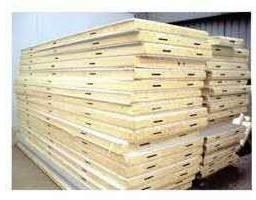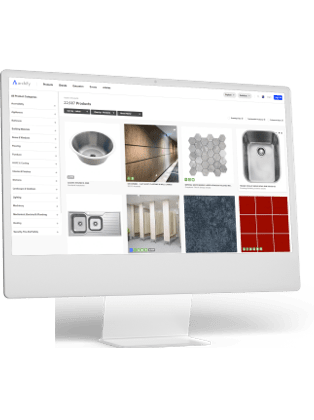olyurethane panels are most commonly used in the modular building and refrigeration industries. They are often compared to EPS panels, but they are not alike at all.
Polyurethane offers a greater R value to expanded polystyrene per thickness.
Polyurethane offers greater structural strength per length.
Polyurethane is categorized as a polymer, based on its chemical structure (a molecule that consists of a series of repeating smaller monomers). It is manufactured by combining two compounds (Isocyanate and Polyol) which react in an exothermic chemical reaction to form rigid foam.
Sandwich panels are made from two outer layers of 0.5mm pre-painted steel with a polyurethane core which provides the panel with its thermal and acoustic insulation.
Advantages
Excellent insulating efficiency over a wide temperature range
Polyurethane does not melt or drip when heated
Polyurethane does not produce spread of flame within the core, nor does it add to the severity of the fire
Delivers the highest R-Value per inch of thickness
Is moisture resistance and water repellent.
olyurethane panels are most commonly used in the modular building and refrigeration industries. They are often compared to EPS panels, but they are not alike at all.
Polyurethane offers a greater R value to expanded polystyrene per thickness.
Polyurethane offers greater structural strength per length.
Polyurethane is categorized as a polymer, based on its chemical structure (a molecule that consists of a series of repeating smaller monomers). It is manufactured by combining two compounds (Isocyanate and Polyol) which react in an exothermic chemical reaction to form rigid foam.
Sandwich panels are made from two outer layers of 0.5mm pre-painted steel with a polyurethane core which provides the panel with its thermal and acoustic insulation.
Advantages
Excellent insulating efficiency over a wide temperature range
Polyurethane does not melt or drip when heated
Polyurethane does not produce spread of flame within the core, nor does it add to the severity of the fire
Delivers the highest R-Value per inch of thickness
Is moisture resistance and water repellent.
olyurethane panels are most commonly used in the modular building and refrigeration industries. They are often compared to EPS panels, but they are not alike at all.
Polyurethane offers a greater R value to expanded polystyrene per thickness.
Polyurethane offers greater structural strength per length.
Polyurethane is categorized as a polymer, based on its chemical structure (a molecule that consists of a series of repeating smaller monomers). It is manufactured by combining two compounds (Isocyanate and Polyol) which react in an exothermic chemical reaction to form rigid foam.
Sandwich panels are made from two outer layers of 0.5mm pre-painted steel with a polyurethane core which provides the panel with its thermal and acoustic insulation.
Advantages
Excellent insulating efficiency over a wide temperature range
Polyurethane does not melt or drip when heated
Polyurethane does not produce spread of flame within the core, nor does it add to the severity of the fire
Delivers the highest R-Value per inch of thickness
Is moisture resistance and water repellent.
Philippines










